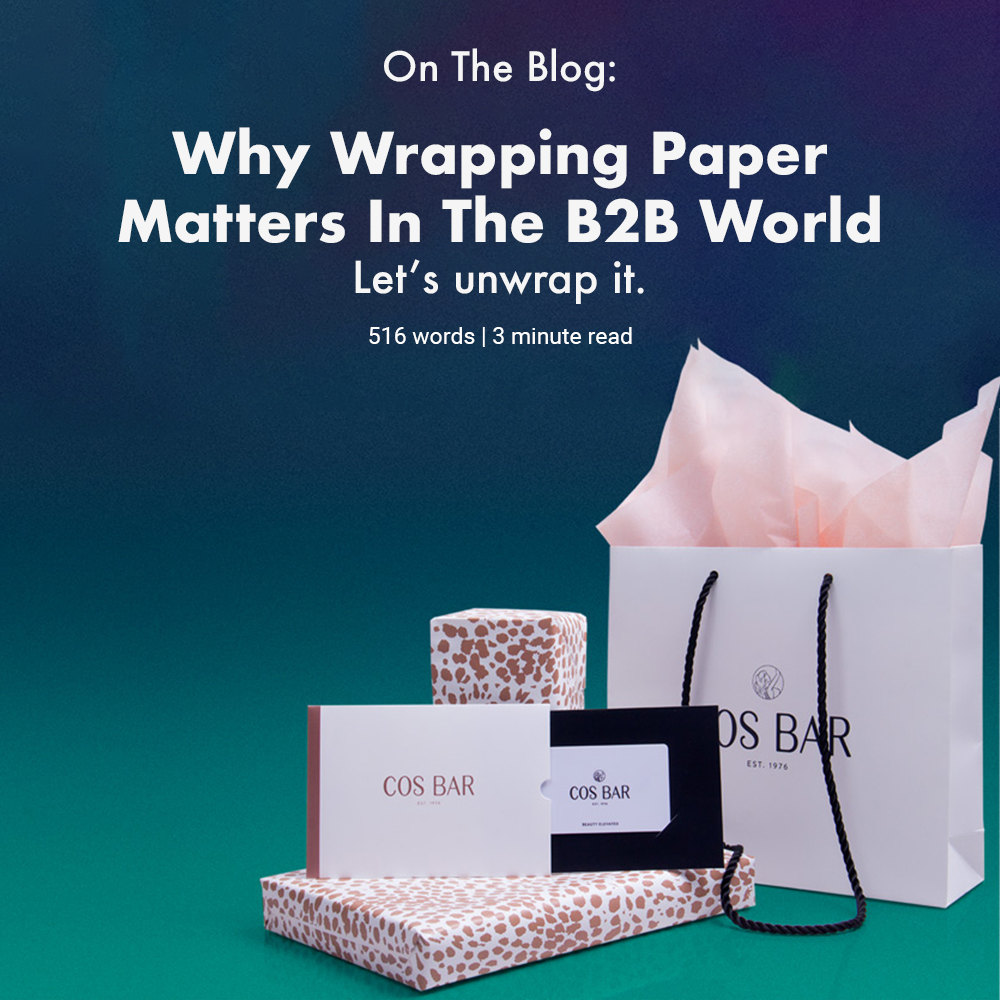In the world of business-to-business (B2B) transactions, creativity often takes a backseat to practicality and efficiency. However, incorporating creativity into your B2B interactions – especially those involving brand visuals – can yield unexpected benefits, from strengthening relationships to boosting brand recognition. Whether you’re thinking about corporate gifting, unveiling a new product, celebrating an event or milestone, or giving away swag at a conference, small touches (like brand-appropriate wrapping paper! 🎁) can give your brand profile just that extra sartorial touch it needs to leave a lasting impression. Here’s some ways in which our clients use our wrapping paper to wow their clients:
1. Elevate Corporate Gifting: Corporate gifting is a common practice to express gratitude, build relationships, and leave a lasting impression. But why settle for a generic gift bag when you can use wrapping paper to create a personalized and memorable presentation? Choose wrapping paper that reflects your brand’s colors or themes, and wrap your gift with care. This adds a touch of thoughtfulness and creativity that won’t go unnoticed.
2. Unveil New Products: Launching a new product or service? Make the experience more exciting by wrapping the unveiling in mystery. Use wrapping paper to cover your product, building anticipation and curiosity among your B2B partners or clients. When the big reveal arrives, the act of unwrapping can create a sense of excitement and engagement.
3. Interactive Workshops: Host workshops or training sessions for your clients or partners. Wrap relevant tools or materials in colorful wrapping paper and let participants unwrap them during the session. This surprise element can inject energy into the workshop and make learning more engaging.
4. Conference Collaterals: When attending conferences or trade shows, stand out by wrapping your promotional materials in branded wrapping paper. This not only sets you apart from the sea of generic handouts but also makes your materials more visually appealing and memorable.
5. Celebrate Milestones: Has your B2B partner achieved a significant milestone or anniversary? Celebrate their successes by sending them a wrapped gift that symbolizes the occasion. It’s a thoughtful gesture that demonstrates your genuine interest in their accomplishments.
6. Themed Marketing Campaigns: Leverage wrapping paper as part of a larger themed marketing campaign. For example, during the holiday season, wrap your promotional materials in festive paper to spread cheer and make your brand more relatable.
7. Unique Proposals: If you’re pitching a big project to a B2B client, consider using a wrapped package as a metaphor for the proposal. Write key points on the wrapping paper and gradually unveil them as you discuss the proposal. This visual aid can enhance communication and make your pitch more engaging.
8. Trade Show Booth Design: Transform your trade show booth into an eye-catching attraction by incorporating wrapping paper into the booth design. Use it as a backdrop, table cover, or even create hanging decorations. This unconventional use of wrapping paper can spark conversations and draw more visitors to your booth.
9. Partner Appreciation Events: Host an appreciation event for your B2B partners and use wrapping paper as a recurring theme. From invitations to décor, wrapping paper can tie the event together while adding a touch of creativity and playfulness.
10. Sustainability Initiatives: Embrace sustainability by using recyclable or eco-friendly wrapping paper. This can align with your brand’s commitment to the environment and demonstrate your values to your B2B partners.
In conclusion, wrapping paper isn’t just for birthdays and holidays; it’s a versatile tool that can inject creativity into your B2B interactions. Whether you’re gifting, promoting, celebrating, or educating, wrapping paper can elevate your efforts and leave a lasting impression on your partners, clients, and stakeholders. By thinking outside the box – or rather, outside the wrapping paper – you can weave creativity into the fabric of your B2B relationships and stand out in a competitive landscape.
